Kurikoma Report
| Autumn Color Report 2014 Official autumn color reports by japan-guide.com |
| previous post |
| next post |
2014/10/15 - Kurikoma Report
by schauwecker
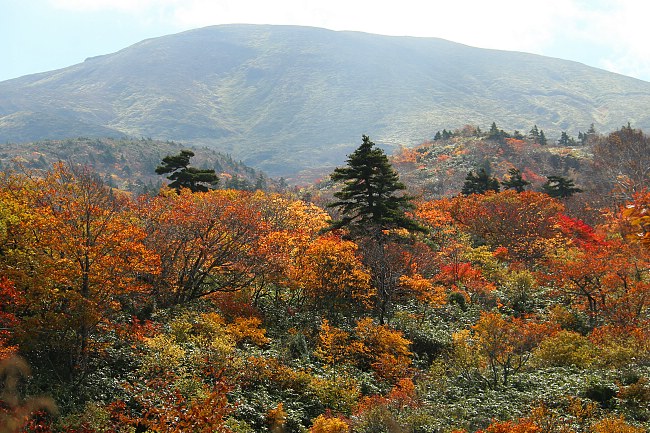
One month into this year's autumn color reporting, I made a first-time visit to Mount Kurikomayama, a volcano on the prefectural borders of Iwate, Miyagi and Akita in the center of the Tohoku Region. The mountain is a popular fall foliage destination, as the colors can be seen for over a month on their way down the slopes. This year, the seasonal colors started appearing around the 1627 meter tall summit already in mid September, earlier than in the average year. In the meantime, they have descended below the 1000 meter mark.
Mount Kurikomayama is most popularly approached from the north through Iwate or from the southeast through Miyagi. Today, I chose the approach from Iwate, taking the Tohoku Shinkansen to Ichinoseki Station and then a rental car to Sukawa Onsen, a collection of two onsen lodgings at around 1000 meters above sea level north of the summit. This is also where the trailhead for the 90-120 minute ascent to the summit is located.
It took me about an hour to drive from Ichinoseki Station to Sukawa Onsen, but I heard that on weekends during the peak of the season traffic jams can cause heavy delays due to the limited capacity of parking lots around the trailhead. The colors were very vibrant along the road winding up the mountain and fortunately were still very nice around Sukawa Onsen. The best colors were today around an altitude of 600 to 1200 meters, but I expect the colors around Sukawa Onsen at an altitude of 1100 meters to be beyond their peak in a few days.
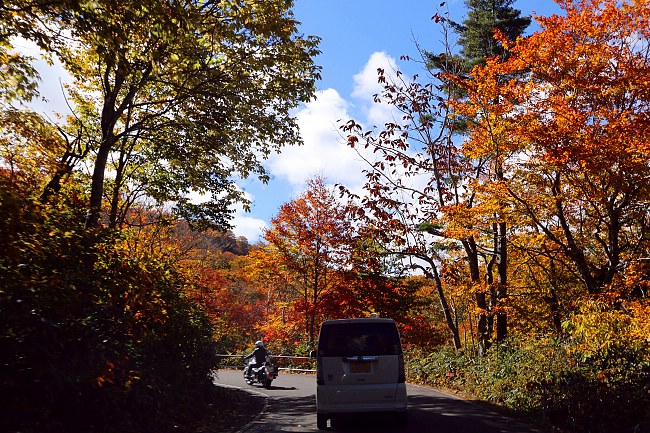
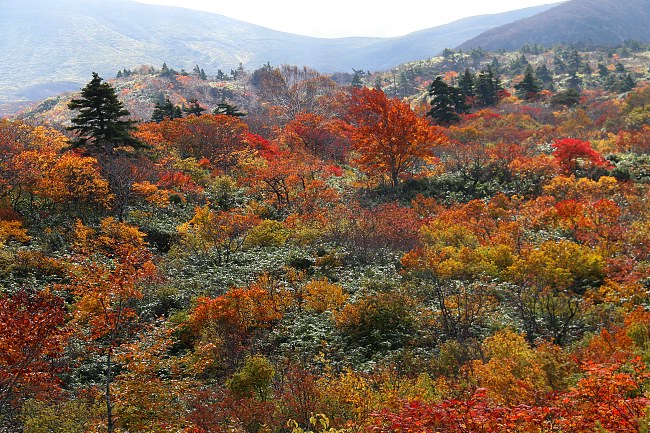
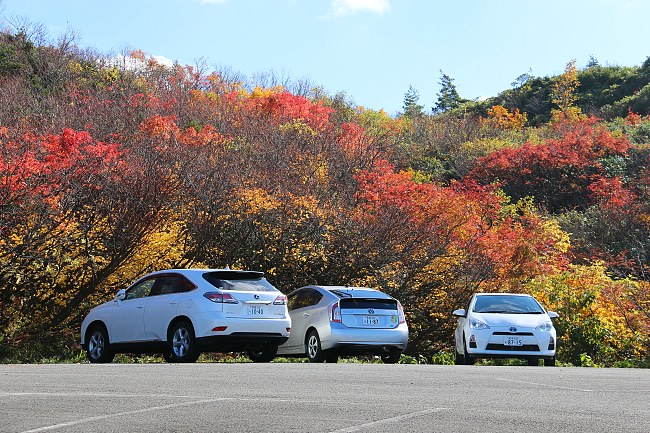
Despite the fact that the autumn colors were nearing the end of the peak around Sukawa Onsen, I decided to accomplish my original goal of gaining even more elevation by climbing to the summit of Kurikomayama at 1627 meters. The trail starts at Sukawa Kogen Onsen, a hot spring hotel whose baths are fed by powerful, natural, sulfuric sources just behind the hotel building.
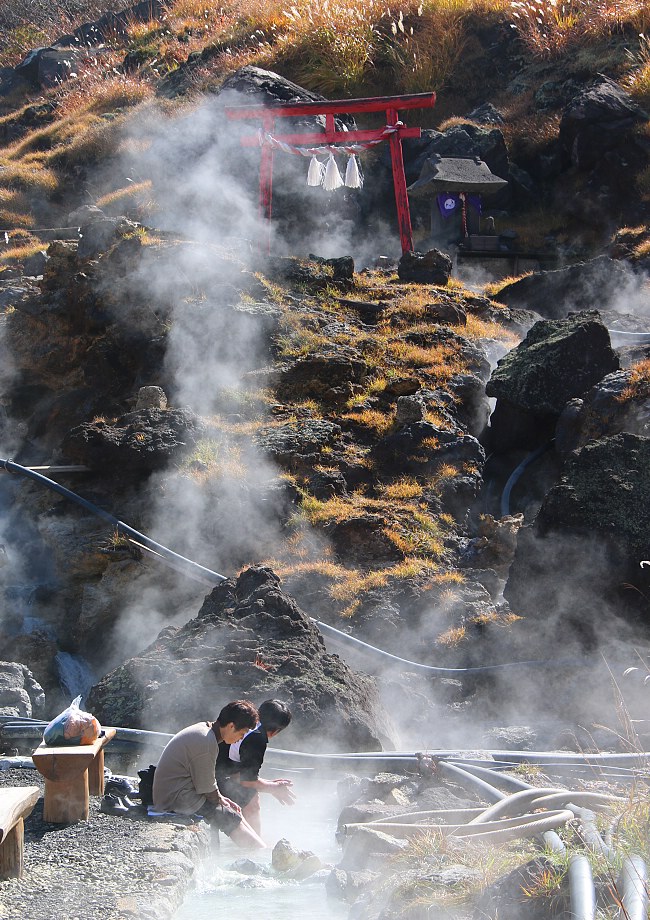
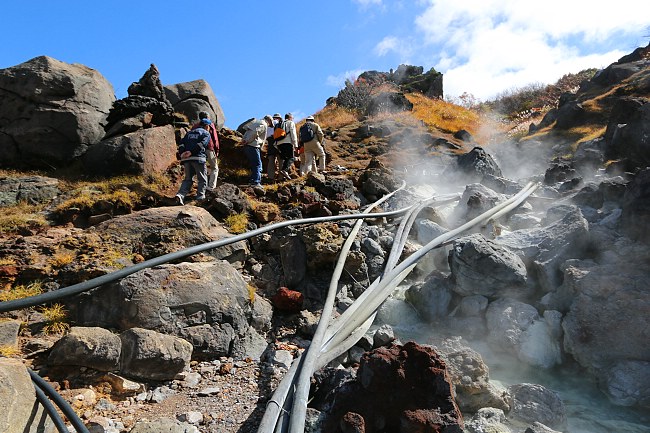
After a 15 minute walk along the trail through vibrantly colored short trees and bushes, I reached the marshland just above Sukawa Onsen whose grasses have matured into a beautiful golden yellow. Above the marshland, the seasonal colors gradually became sparser and were soon limited to just golden grass.
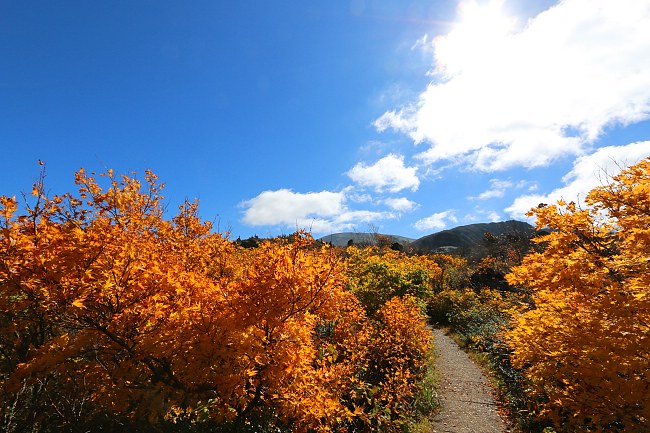
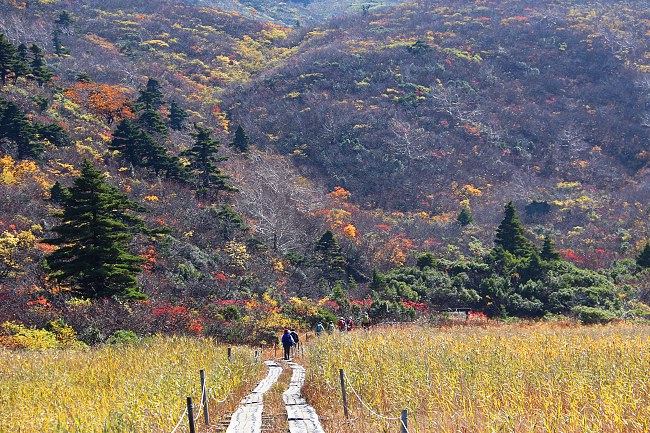
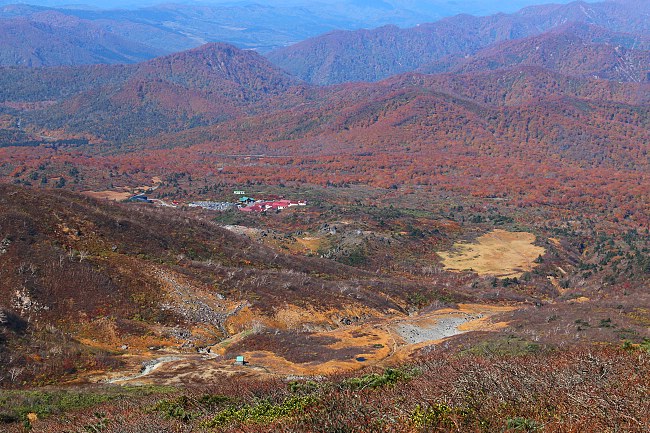
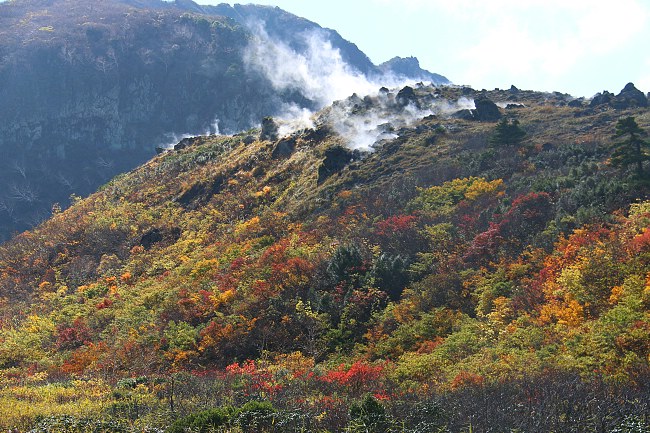
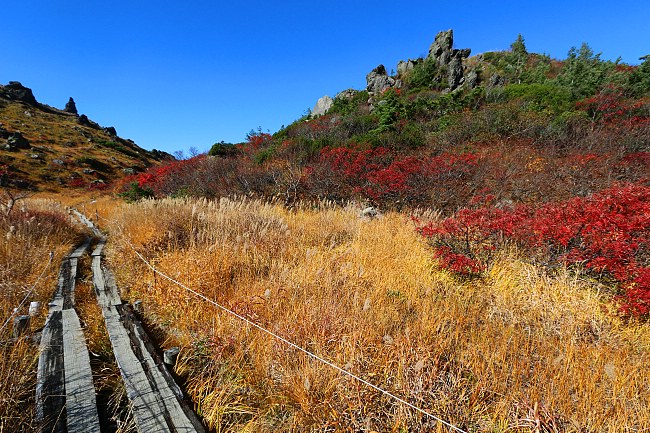
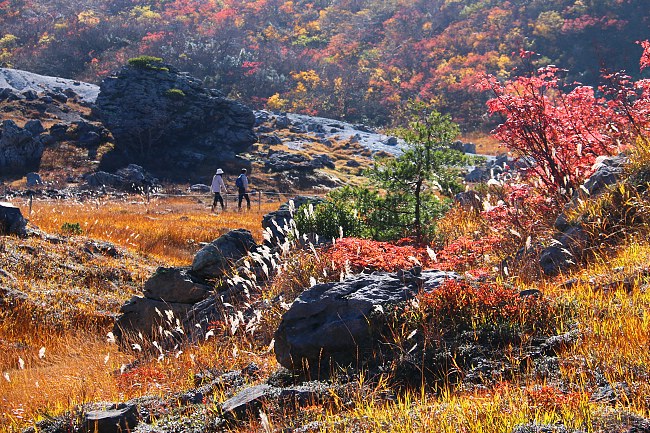
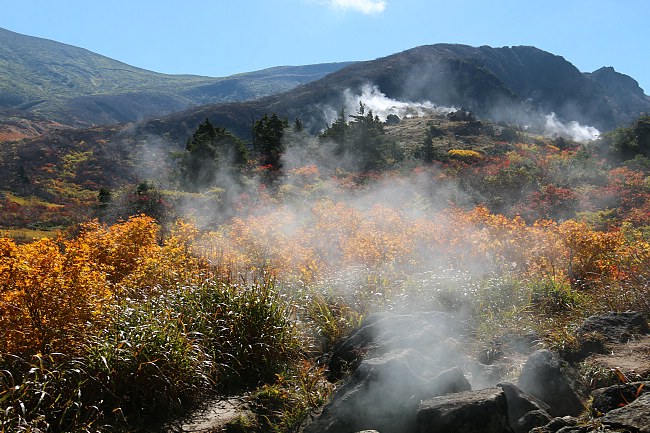
After passing a hell valley, I reached the strongly sulfuric Lake Showa, a pond that was created during Kurikoma's last eruption, a steam explosion in 1944.
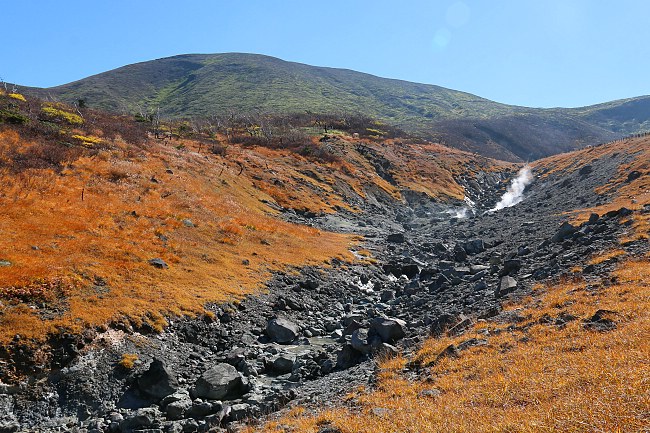
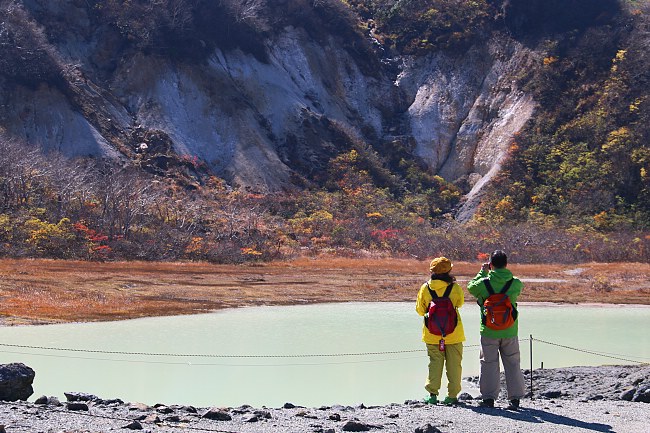
The remaining ascent to the summit of Kurikomayama offered spectacular views down the colorful slopes, but the bushes along the trail were either beyond the peak of their autumnal beauty or evergreen sasa bamboo.
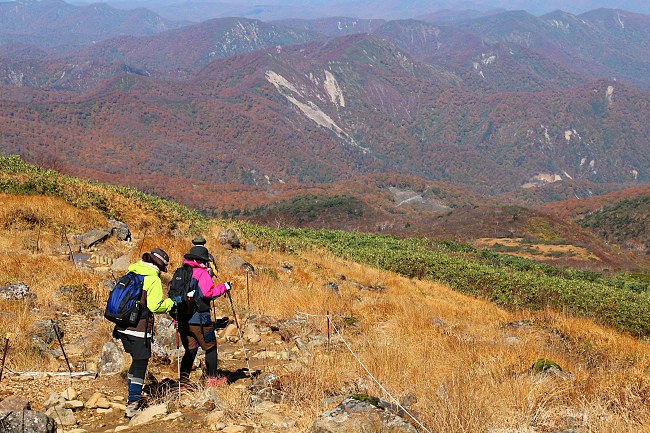
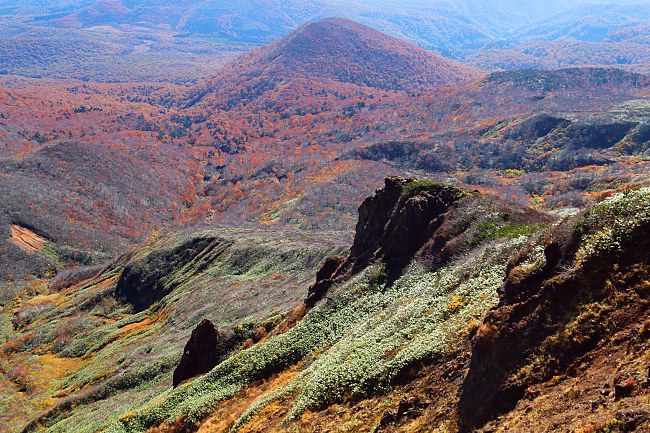
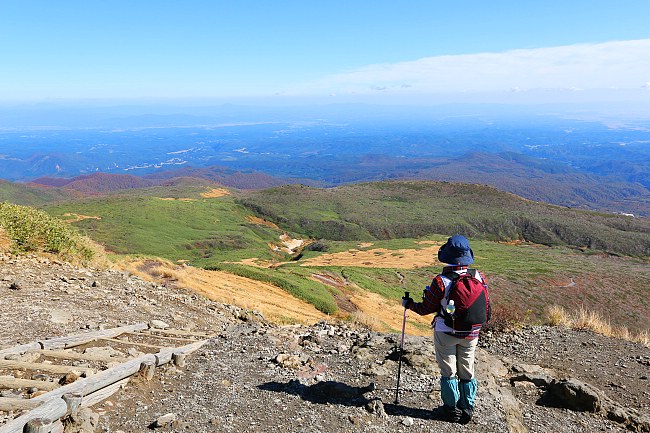
After descending the mountain, I had to try out the local onsen waters - the perfect way to end a day in the Japanese mountains. Both lodgings at Sukawa Onsen, the Sukawa Kogen Onsen hotel (on the Iwate side of the border) and the nearby Kurikoma Sanso (on the Akita side), allow non-staying guests to enter their baths during daytime for 600 and 700 yen, respectively. I tried out the open-air bath of the Sukawa Kogen Onsen and loved the strongly sulfuric, highly acidic water that ran directly from the springs behind the hotel into the onsen bath.
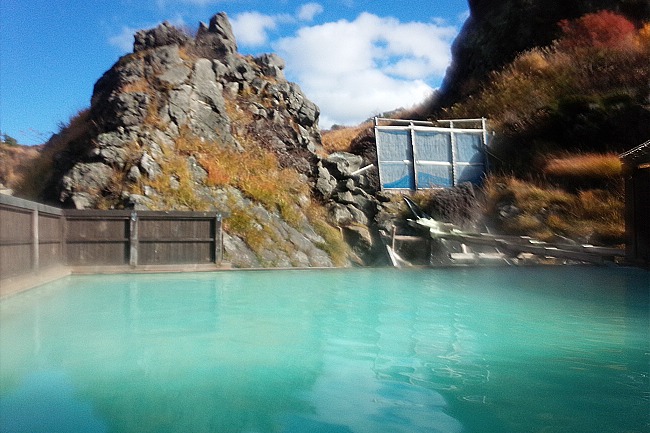
Note that on both the Iwate and the Miyagi side, public transportation to the trailheads is very infrequent, especially on weekdays. A rental car is the recommended means of transportation. The Iwate side is best accessed from Ichinoseki Station, and the Miyagi side is best accessed from Kurikoma Kogen Station; both stations are located along the Tohoku Shinkansen.
| previous post |
| next post |
|
List of Posts:
2014/12/05 - Tokyo Report 2014/12/04 - Kanazawa Report 2014/12/03 - Kyoto Report 2014/12/02 - Kamakura Report 2014/11/28 - Kyoto Report 2014/11/27 - Tokyo Report 2014/11/26 - Nara Report 2014/11/25 - Kyoto Report 2014/11/21 - Osaka Report 2014/11/20 - Kyoto Report 2014/11/19 - Korankei Report 2014/11/18 - Miyajima Report 2014/11/18 - Tokyo Report 2014/11/17 - Kyoto Report 2014/11/14 - Kyoto Report 2014/11/14 - Himeji Report 2014/11/13 - Fuji Report 2014/11/13 - Tokyo Report 2014/11/12 - Eiheiji Report 2014/11/11 - Kyoto Report 2014/11/07 - Tokyo Report 2014/11/07 - Kyoto Report 2014/11/06 - Yamadera Report 2014/11/04 - Fuji Report 2014/11/04 - Hakone Report 2014/10/31 - Karuizawa Report 2014/10/29 - Shima Onsen Report 2014/10/24 - Fuji Report 2014/10/21 - Bandai Report 2014/10/21 - Nikko Report 2014/10/20 - Towada Report 2014/10/16 - Tateyama Report 2014/10/15 - Kurikoma Report 2014/10/08 - Nasu Report 2014/10/07 - Nikko Report 2014/10/01 - Oze Report 2014/09/29 - Tateyama Report 2014/09/26 - Nikko Report 2014/09/19 - Tokachidake Report 2014/09/18 - Kurodake Report 2014/09/17 - Asahidake Report |
Questions? Ask in our forum.